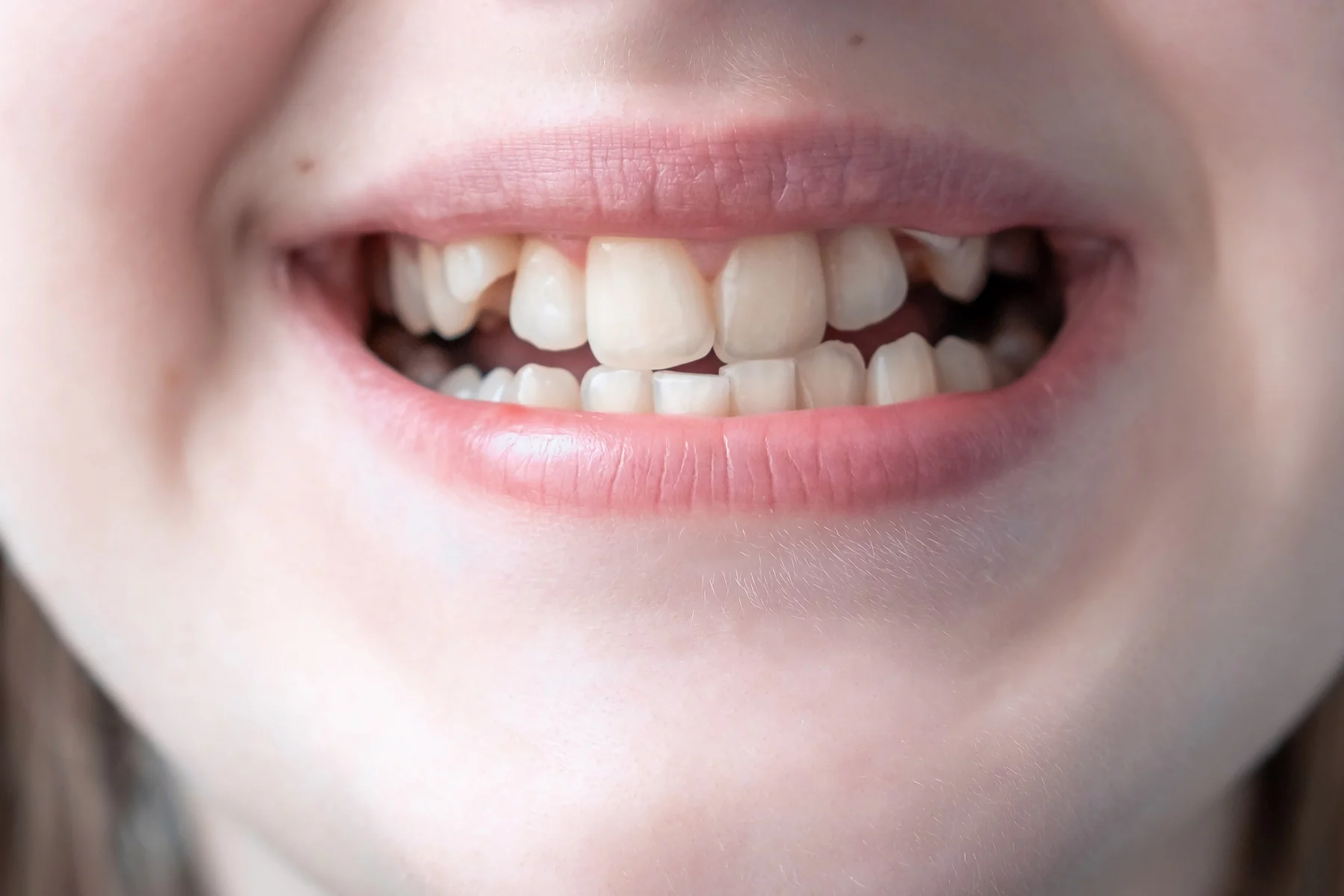Do crooked teeth characterize your child’s smile? Slanted teeth may appear uncommon, but it is a fairly widespread dental concern. It can be valuable information to understand the root causes behind a slanted smile and discover the available solutions to correct it. In this article, we will delve into the factors contributing to slanted, tilted, or lopsided teeth and explore various treatment options that can help fix this issue. So, if you’re wondering how to fix slanted teeth, keep reading to gain insights and find potential solutions that may be suitable for your child’s dental needs.
Slanted teeth can occur due to several reasons. One primary cause is genetics, as certain individuals may inherit dental traits that contribute to tooth misalignment. Additionally, childhood habits such as thumb sucking, prolonged pacifier use, or prolonged bottle feeding can exert pressure on the teeth, leading to them becoming slanted. Another common factor is an imbalance in the size of the upper and lower jaws, which can create insufficient space for the teeth, causing them to shift and slant.
How To Fix Slanted Teeth
Thankfully, various treatment options are available to correct slanted teeth and restore a straighter smile. One popular approach is orthodontic treatment, which involves braces or clear aligners to move the teeth into their proper positions gradually. These appliances apply gentle pressure to guide the teeth’s movement over time, resulting in a more aligned and aesthetically pleasing smile. In some situations, tooth extraction may be compulsory to create sufficient space for the remaining teeth to align properly.
Another alternative for fixing slanted teeth is dental veneers. Veneers are thin, customized shells bonded to the teeth’ front surface, effectively covering up any misalignment and creating the appearance of a straighter smile. This option particularly benefits individuals with minor slanting issues or those seeking a quick and non-invasive solution.
Sign And Symptoms
As children start developing their permanent teeth, it can be challenging for parents to determine whether their teeth will grow in alignment correctly or not. Nevertheless, parents can observe subtle indications of tooth misalignment even at a young age.
If your child is experiencing difficulties speaking, swallowing, or biting down properly as their permanent teeth emerge, it is advisable to communicate with your dentist or orthodontist. It is also important to seek advice from a dental expert if your child was (or continues to be) a regular thumbsucker.
How to Prevent This Problem?
Many people think about how they can stop or completely avoid crooked teeth. The solution to that is to begin at a young age. To ensure that adult teeth don’t grow crooked, kids around five to six years old should visit the dentist every six months for regular check-ups. Sometimes, experts may suggest using removable or fixed dental spacers to prevent overcrowding and severely crooked teeth in the future.
This is known as interceptive orthodontics. Furthermore, parents should be mindful of their child’s behaviors, like using a pacifier for a long time or sucking their thumb.
Can These Teeth Cause Health Problems?
Crooked teeth can have negative consequences for your oral health. Here are some issues that can arise due to crooked teeth:
- Tooth decay, plaque, and gum disease: Having straight teeth makes it easier to maintain good oral hygiene. With straighter teeth, you can brush, floss, and keep your gums healthy more effectively. Crooked teeth are difficult to clean properly. This build-up can result in the formation of plaque, cavities, and even gum disease
- Tooth erosion: Severe tooth misalignment or inclination can create excessive friction when you bite down, leading to increased wear on the teeth over time
- Bite problems: Can crooked teeth cause pain? When your teeth are not aligned correctly, a condition known as malocclusion, you may experience discomfort or difficulty when chewing. Comprehensive orthodontic treatment can help alleviate these symptoms and realign your bite, improving overall functionality
- Gum recession: Crooked teeth can also contribute to gum recession, which can cause sensitivity in response to hot and cold foods or drinks. Moreover, teeth with a buildup of plaque and tartar deposits have a higher risk of developing gum disease
Final Words: How to Fix Slanted Teeth?
Fixing slanted teeth is a common dental concern that can significantly impact a person’s confidence and oral health. Thankfully, there are several effective methods available to address this issue. Hopefully, this informative guide increases your knowledge about the query: how to fix slanted teeth. Please read our other latest blogs to get answers to different dental problems.




